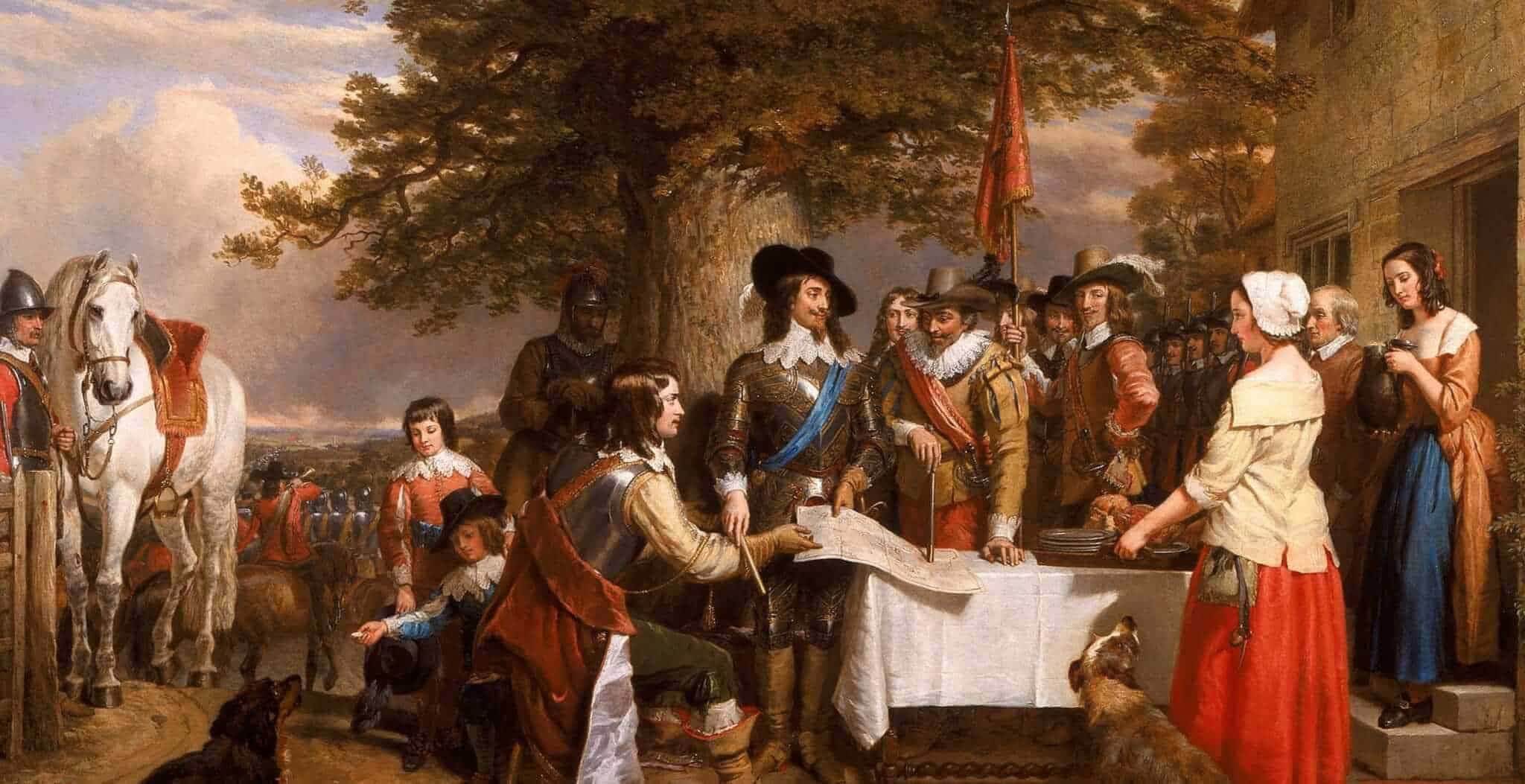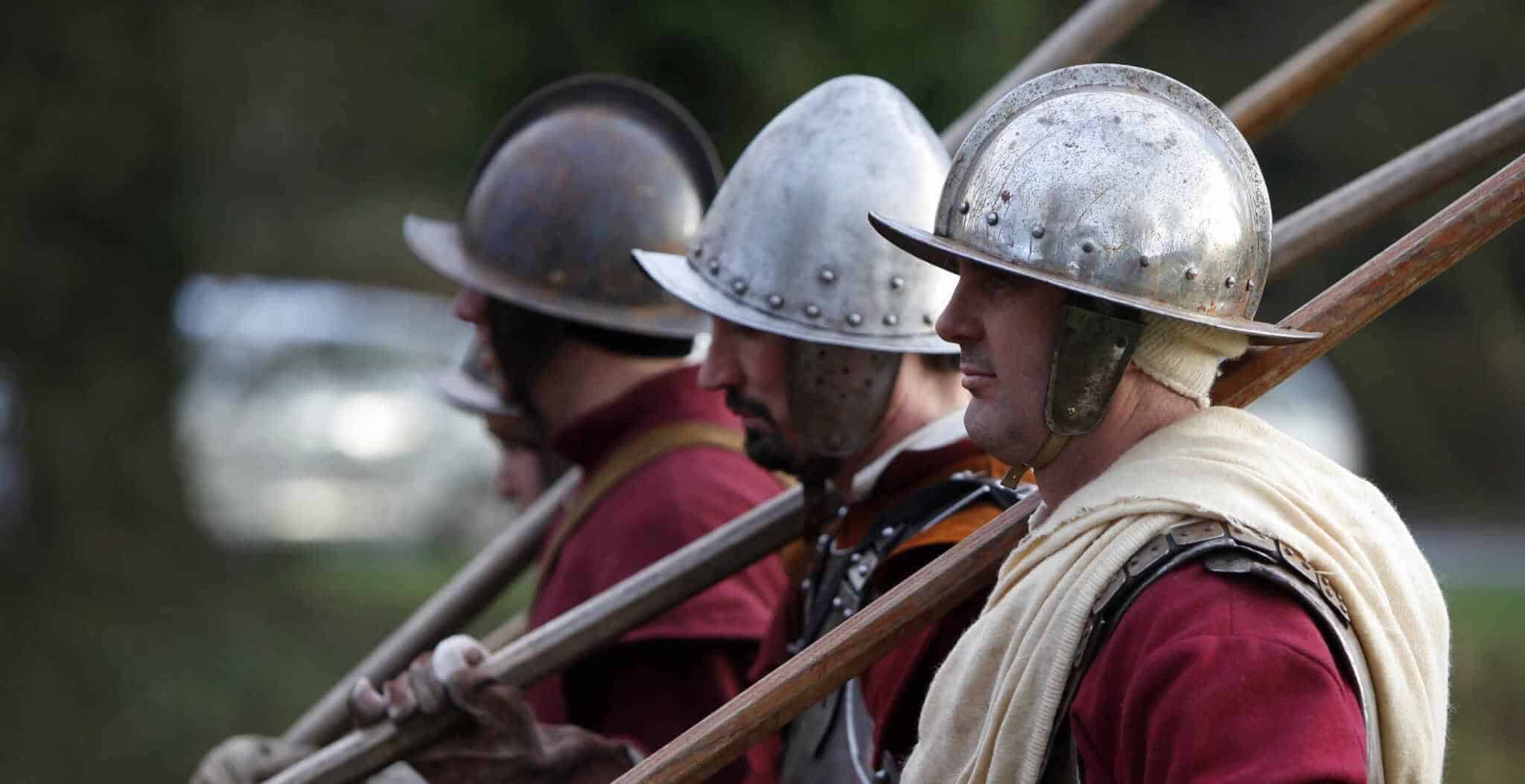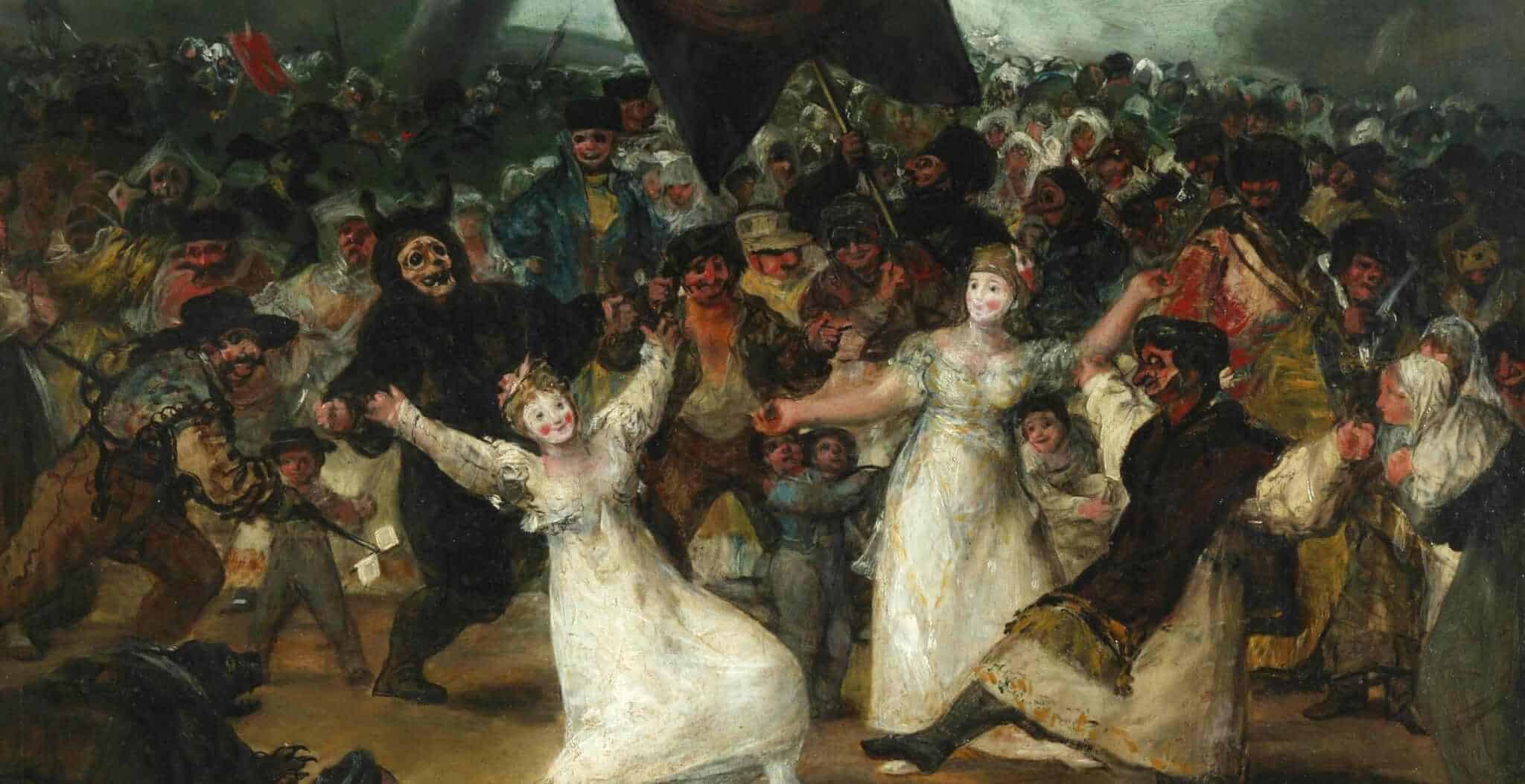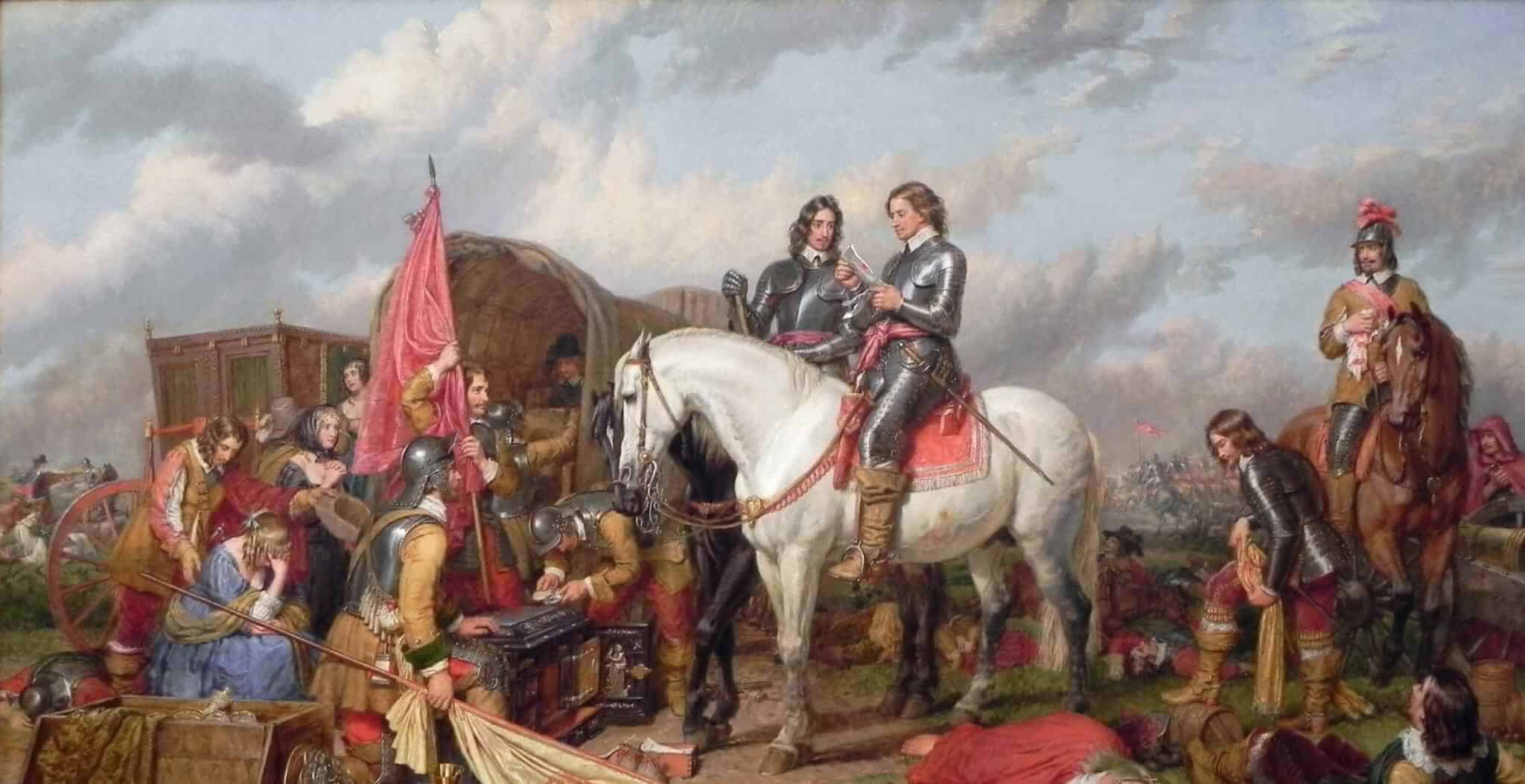The Battle of Edgehill took place on 23rd October 1642 and was the first battle of the English Civil War.
In 1642, after considerable constitutional disagreements between the government and King Charles I, the king finally raised his standard and led his troops against the Parliamentarian army.
Under the command of Prince Rupert of the Rhine, the Royalist (Cavalier) troops were marching from Shrewsbury towards London in support of the King, when they were intercepted by the Parliamentarian (Roundhead) forces under the command of Robert Devereux, Earl of Essex, at Edgehill, midway between Banbury and Warwick.
Almost 30,000 soldiers clashed in a battle that was hard fought and bloody, yet inconclusive. Both armies suffered heavy losses during the three hours of fighting: the bodies were looted for clothes and money, and the dead and dying were left where they lay. As dusk was approaching, the Parliamentarians withdrew to Warwick leaving the way clear to London. But Charles’ army only reached Reading before Essex’s troops regrouped, so the battle has always been regarded as a draw with no one side victorious.
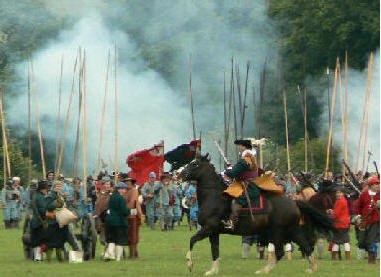
However this was not to be the last of the battle of Edgehill.
Just before Christmas 1642, the first sighting of a ghostly re-enactment was reported by some shepherds as they walked across the battlefield. They reported hearing voices and the screams of horses, the clash of armour and the cries of the dying, and said they had seen a ghostly re-enactment of the battle in the night sky. They reported it to a local priest and it is said that he too saw the phantoms of the fighting soldiers. Indeed there were so many sightings of the battle by the villagers of Kineton in the days that followed, that a pamphlet, “A Great Wonder in Heaven”, detailing the ghostly goings-on was published in January 1643.
News of the terrifying apparitions reached the King. Intrigued, Charles sent a Royal Commission to investigate. They too witnessed the ghostly battle and were even able to identify some of the soldiers taking part, including Sir Edmund Verney, the king’s standard bearer. When captured during the battle, Sir Edmund had refused to give up the standard. To take the standard from him, his hand was cut off. The Royalists subsequently recaptured the standard, it is said still with Sir Edmund’s hand attached.
To try and stop the apparitions, the villagers decided to give Christian burial to all the corpses that still lay on the battlefield and some three months after the battle, the sightings appeared to stop.
However to this day, haunting sounds and apparitions have been witnessed at the site of the battle. Sightings of the phantom armies seem to have decreased, but the eerie screams, canon, thunder of hooves and battle cries are still sometimes heard at night, particularly around the anniversary of the battle.
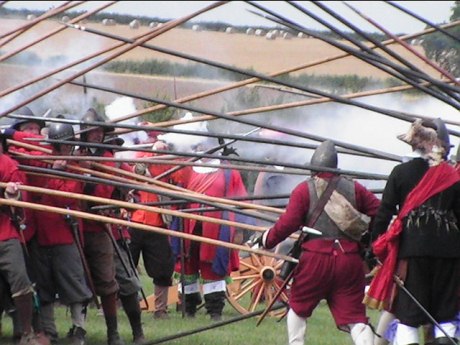
This is not the only phantom battle dating from the English Civil War. The decisive Battle of Naseby, Northamptonshire took place on June 14th 1645. It started at around 9am in the morning, lasted around 3 hours and resulted in the Royalists being routed and fleeing the field. Since then, on the anniversary of the battle, a phantom battle has been seen taking place in the sky above the battlefield, complete with the sounds of screaming men and cannons firing. For the first hundred years or so after the battle, the villagers would come out to watch the eerie spectacle.
Uniquely though, as a result of the Royal Commission’s investigation, the Public Record Office officially recognises the Edgehill ghosts. They are the only British phantoms to have this distinction.
Click here for a battlefield map.
More Battles in the English Civil War:
| Battle of Edgehill | 23 October, 1642 |
| Battle of Braddock Down | 19 January, 1643 |
| Battle of Hopton Heath | 19 March, 1643 |
| Battle of Stratton | 16 May, 1643 |
| Battle of Chalgrove Field | 18 June, 1643 |
| Battle of Adwalton Moor | 30 June, 1643 |
| Battle of Lansdowne | 5 July, 1643 |
| Battle of Roundway Down | 13 July, 1643 |
| Battle of Winceby | 11 October, 1643 |
| Battle of Nantwich | 25 January, 1644 |
| Battle of Cheriton | 29 March, 1644 |
| Battle of Cropredy Bridge | 29 June, 1644 |
| Battle of Marston Moor | 2 July, 1644 |
| Battle of Naseby | 14 June, 1645 |
| Battle of Langport | 10 July 1645 |
| Battle of Rowton Heath | 24 September, 1645 |
| Battle of Stow-on-the-Wold | 21 March, 1646 |
Published: 22nd March 2015
